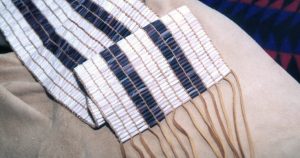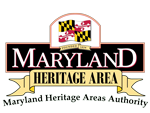Mattagund
Representative of Indigenous Nations before the Maryland General Assembly
(mid-17th century)

On April 12, 1666, three representatives from different Indigenous nations delivered speeches to the Upper House of the General Assembly of the colony of Maryland. The representatives were Mattagund, for the Anacostan, Doeg, and Patuxent; Choatick, possibly for the Chingwateick and Pangayo; and Isapatawn, for the Nanjemoy. Each of their addresses depicts the challenges that were facing their people and expresses the discontent and tension persisting between the colonists and their nations. Through the issues presented and suggestions made, the impact of decades of colonial presence is clear. These addresses serve as the basis for development of the 1666 Articles of Peace and Amity.
The first of the Great Men to speak was Mattagund. He opened by requesting that previous grievances be set aside from the current discussions, pointing out that there were numerous offenses on both sides. Mattagund addresses the problem of the colonist’s livestock, whose hogs and cattle ate their corn and encroached on their territories. This was a major problem, as the livestock are destroying an essential food source that sustains his people year-round, and especially through winter. Additionally, the continued encroachment was pushing his people further and further from their lands. In order to stop this, the Indigenous people had been responding by killing the colonist’s hogs. The often-quoted line from Mattagund’s address expresses the problem.
“Your hogs and cattle injure us you come too near us to live and drive us from place to place. We can fly no farther let us know where to live and how to be secured for the future from hogs and cattle” (Proceedings and Acts of the General Assembly, April 1666 – June 1676, Pg. 15).
Another topic addressed were the events related to the murder of the Langworth children. Mattagund speaks of the murder, saying that those responsible were given over to the colonial authorities to face punishment. Yet, a native man was found dead in the path, killed by colonists, and there had been no action taken on the matter. He asked for this inequality to be considered.
Did You Know?
In December 2020, the Council of the District of Columbia voted to honor the language of the treaty guaranteeing fishing rights to Native people by granting free fishing licenses to members of the Piscataway Indian Nation and Tayac Territory and the Piscataway Conoy Tribe of Maryland.
Additional Resources
Proceedings and Acts of the General Assembly, April 1666-June 1676, Archives of Maryland Online. Accessed November 2nd 2022. http://aomol.msa.maryland.gov/000001/000002/html/am2–14.html.
Rountree, Helen C., and Rebecca Seib. Indians of Southern Maryland. Baltimore: Maryland Historical Trust, 2014. p. 88
1666 Maryland Articles of Peace and Amity – Archives of Maryland Online
Description drawn from: Alexander T. Smith on behalf of Historic St. Mary’s City. “Addressing the Assembly: Piscataway Treaty Talks, 1666.” Clio: Your Guide to History. January 25, 2022 Accessed October 6, 2023. https://theclio.com/entry/145224
